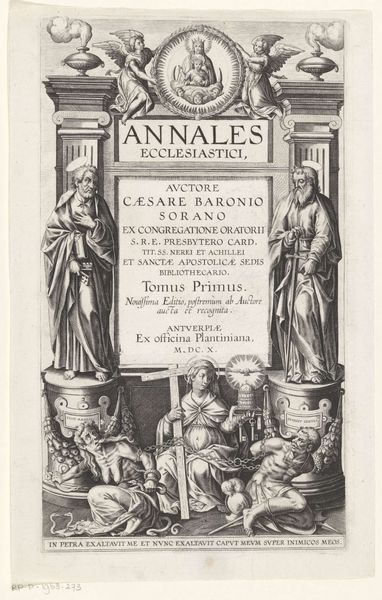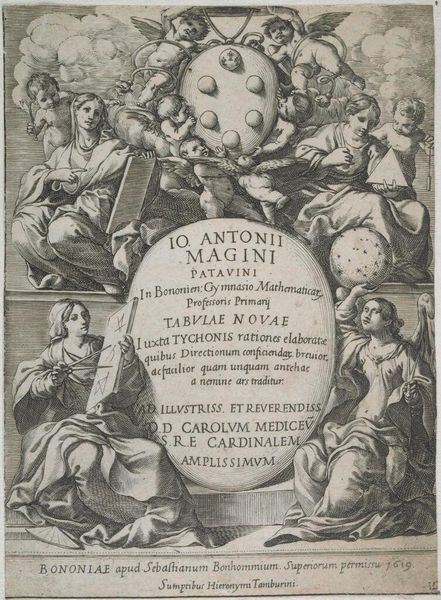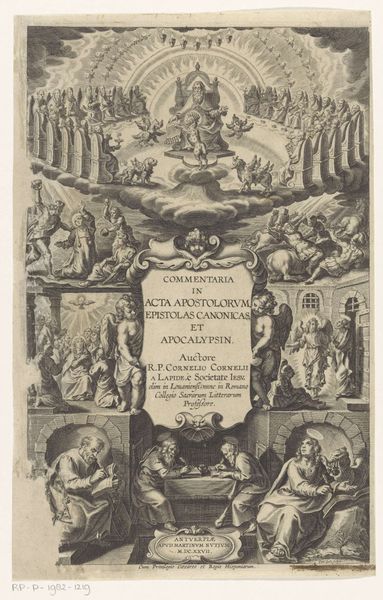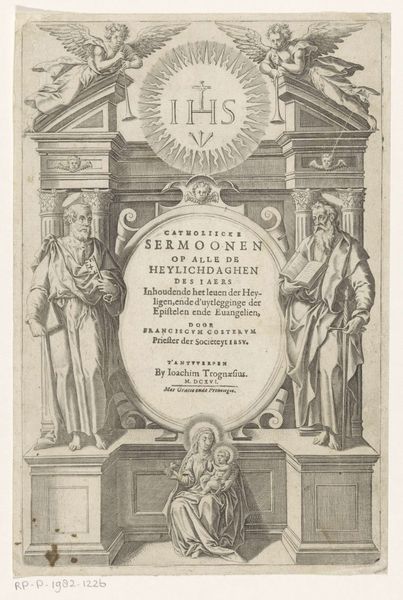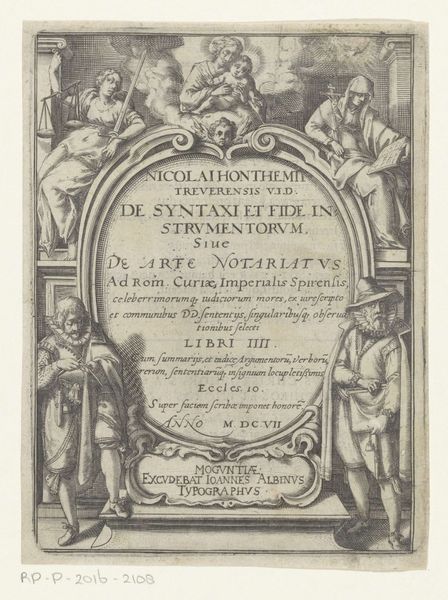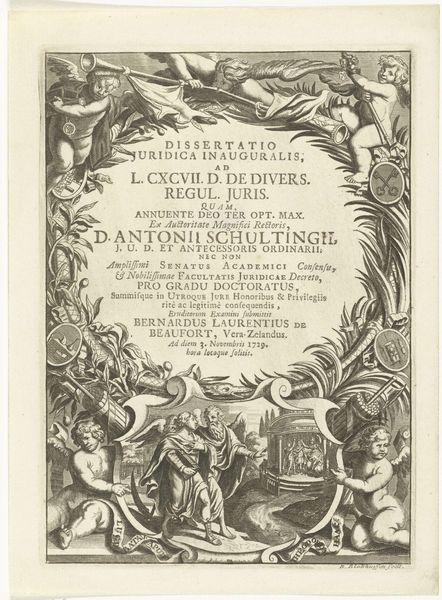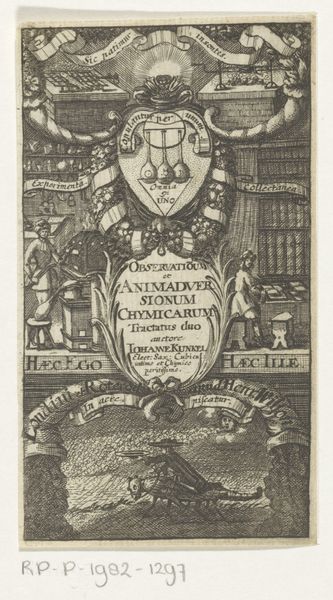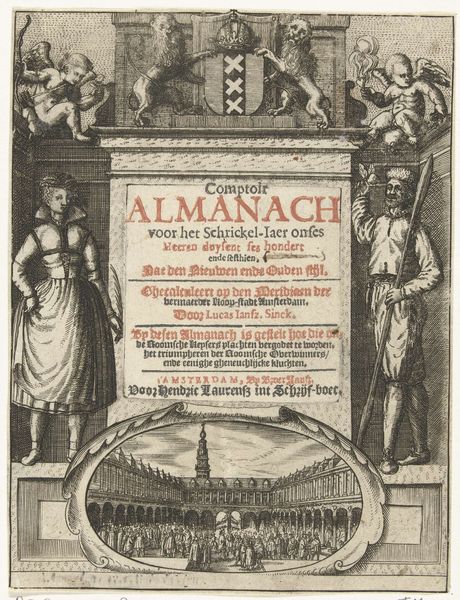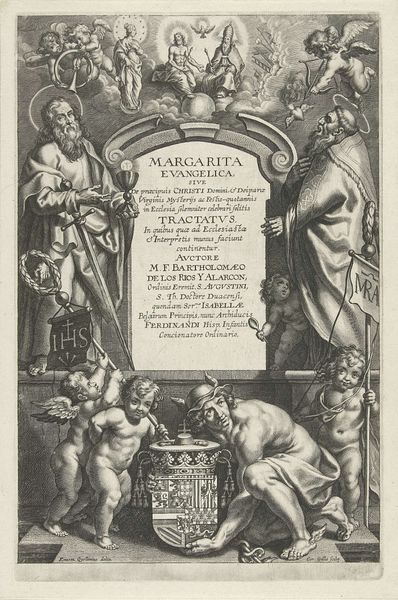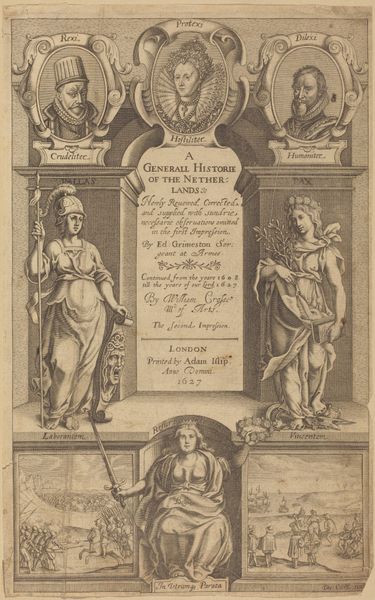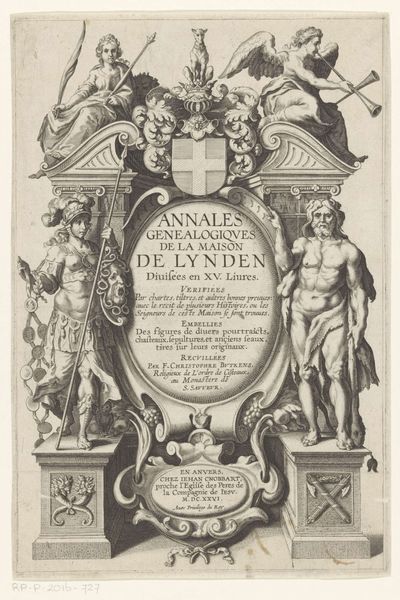
print, engraving
#
baroque
# print
#
figuration
#
line
#
engraving
Dimensions: height 329 mm, width 216 mm
Copyright: Rijks Museum: Open Domain
Curator: Look closely at this meticulously detailed engraving, "Title Page for Annales Sacri - First Book," created around 1620 by Theodoor Galle. Editor: My first impression is of intense contrasts, dark and light. The rigid architecture seems to weigh down the cherubic figures above. There is such strong dichotomy. Curator: That tension speaks to the Baroque style that flourished at the time. The engraving, a type of print, served as the introductory page for a religious text. It presents us with the weight and power of religious knowledge being disseminated through print culture. Editor: And those figures flanking the central text - allegorical representations of the Old and New Testaments? What do you think about the institutional framework the artwork implies, the authority claimed here? Curator: Precisely. On the left, “Lex” represents the Old Testament’s law. On the right, the prophet alludes to the prophetic tradition within Judaism which anticipates and prepares the way for Christian teachings, symbolizing the transition and fulfillment in Christian doctrine. The architecture of this composition serves the authority that produces the “sacred annals”. Editor: You've highlighted a visual representation of a historical power dynamic - the superseding of one belief system by another. Is that hierarchy justified? How do the depicted power relations impact those excluded from the narrative, their stories untold or actively suppressed? I mean…the architecture appears so sturdy but what about its foundations and underlying logic? Curator: Absolutely. The image works within a specific socio-political context where religious dogma and cultural power intersect. Consider how printmaking itself advanced during this period. Editor: Well, for me it raises urgent questions about representation. Curator: Yes, and hopefully, the audience also reflects on their position relative to this artwork. Editor: This piece gives a window into how belief systems constructed images of themselves and how power was wielded in the 17th Century. Curator: Indeed. This is just one example of many different forms of artistic expressions throughout history and the questions it can spark are still valuable today.
Comments
No comments
Be the first to comment and join the conversation on the ultimate creative platform.
